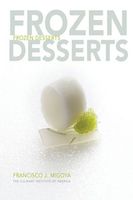Advertisement
Whisks
Appears in
Published 2008
It is recommended that whisks have strong stainless steel wires with a sealed and watertight handle. Otherwise, if any liquid seeps into the handles, it is very difficult to clean them properly and as a result they will become a major source for bacteria that can cause food-borne illnesses.
There are three kinds of whisks: piano whisks, balloon whisks, and French whisks (a.k.a. rigid whisks). French whisks have the thickest wire, which makes for awkward stirring. The thin yet strong wires found in piano whisks and balloon whisks facilitate the mixing of ingredients thanks to their partial flexibility. Piano whisks and balloon whisks can also be used for whipping eggs, egg yolks, egg whites, and heavy cream. Balloon whisks tend to be rounder (hence the name) than piano whisks and facilitate the incorporation of air to a greater extent since their wires are farther apart than those in piano whisks. French whisks can be used as well to whip ingredients, but the process takes longer because the thicker wire makes for uncomfortable and awkward whisking and whipping.


